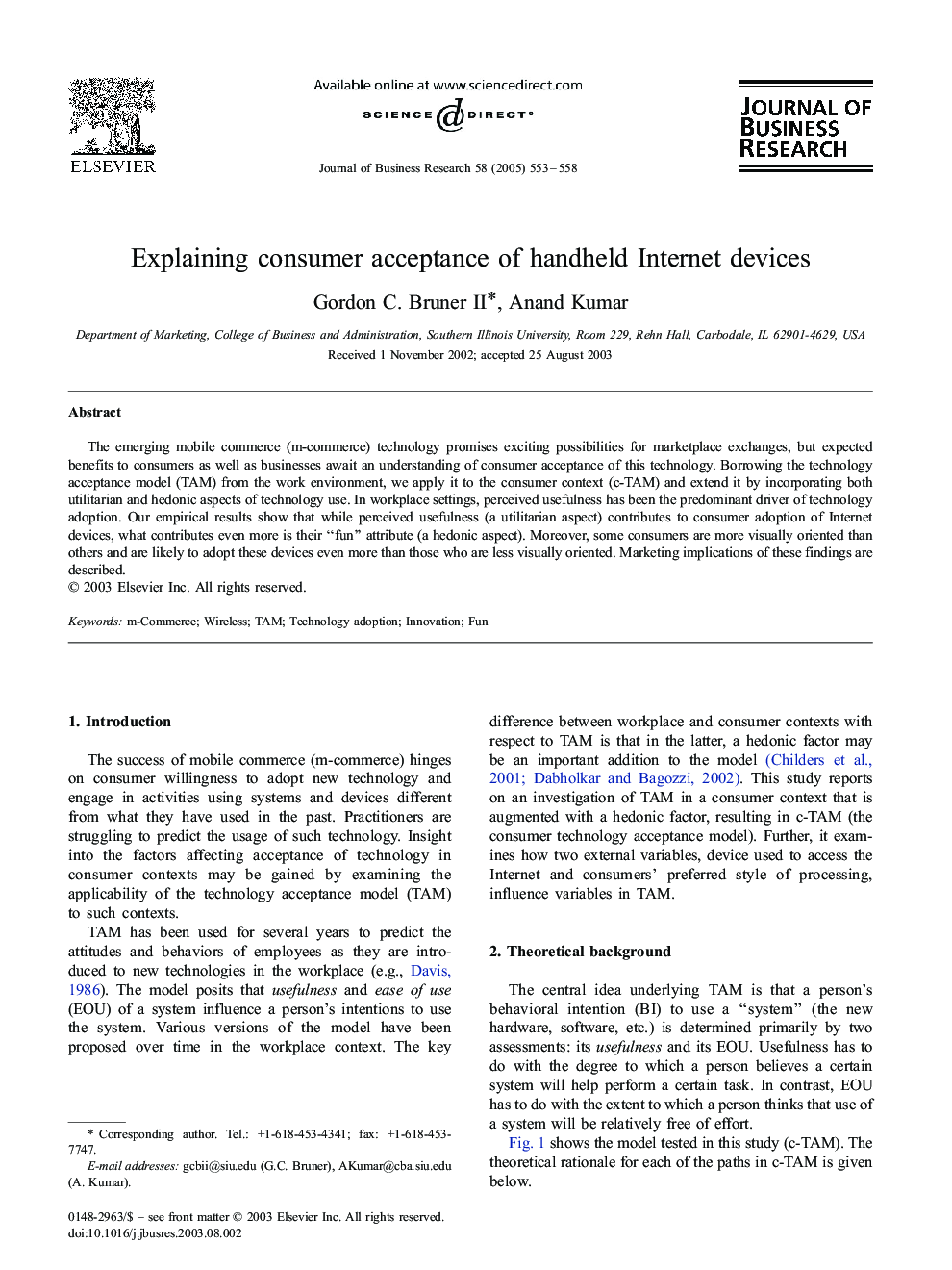| Article ID | Journal | Published Year | Pages | File Type |
|---|---|---|---|---|
| 10493207 | Journal of Business Research | 2005 | 6 Pages |
Abstract
The emerging mobile commerce (m-commerce) technology promises exciting possibilities for marketplace exchanges, but expected benefits to consumers as well as businesses await an understanding of consumer acceptance of this technology. Borrowing the technology acceptance model (TAM) from the work environment, we apply it to the consumer context (c-TAM) and extend it by incorporating both utilitarian and hedonic aspects of technology use. In workplace settings, perceived usefulness has been the predominant driver of technology adoption. Our empirical results show that while perceived usefulness (a utilitarian aspect) contributes to consumer adoption of Internet devices, what contributes even more is their “fun” attribute (a hedonic aspect). Moreover, some consumers are more visually oriented than others and are likely to adopt these devices even more than those who are less visually oriented. Marketing implications of these findings are described.
Related Topics
Social Sciences and Humanities
Business, Management and Accounting
Business and International Management
Authors
Gordon C. II, Anand Kumar,
